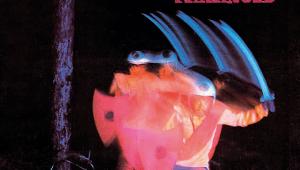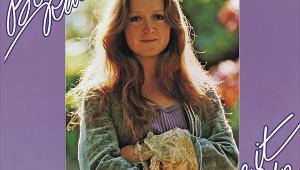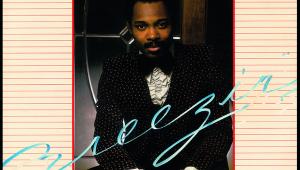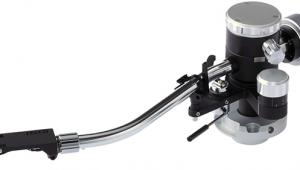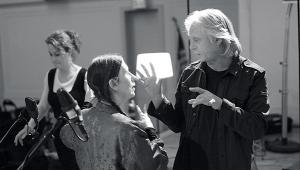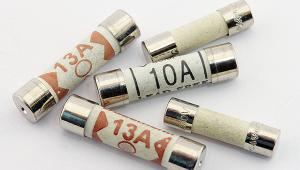Go-Go's Beauty And The Beat
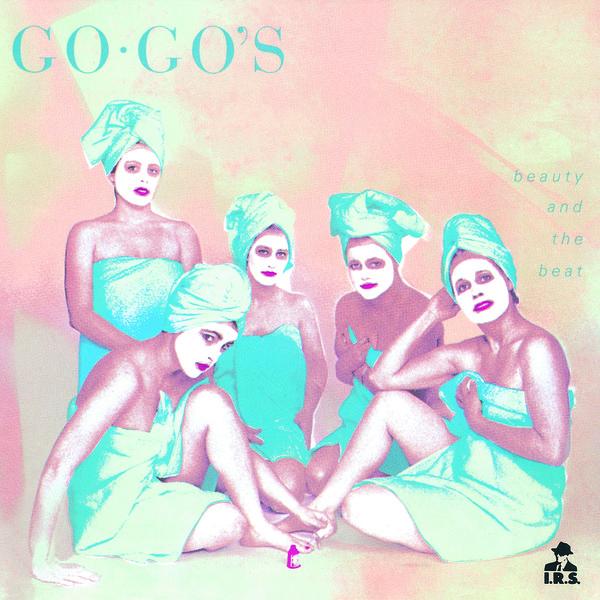
If women face all-too-familiar obstacles to achieving success in music these days, many of those barriers have at least been broken down over the years by trailblazing female artists. One such pioneering act is undoubtedly The Go-Go's, who burst out of the Los Angeles punk scene in the late 1970s and set a template for pop punk that still endures.
Although they didn't enjoy anything like as much success in the UK - lead single 'Our Lips Are Sealed' narrowly missed the Top 40 and the album didn't chart at all - for a time they were arguably the biggest new wave band in America, thanks to their debut LP Beauty And The Beat.
This spent six weeks at the top of the US album charts, which is why, on Showtime's 2020 documentary The Go-Go's, they were described as 'the most successful all-female band of all time'. Indeed, while many others either side of them might challenge them for that crown, as artists writing and performing their own material there have been none who can match their impact.
Not bad for a bunch of self-taught scruffs who were playing dive bars just a few months before they ascended those dizzying heights.
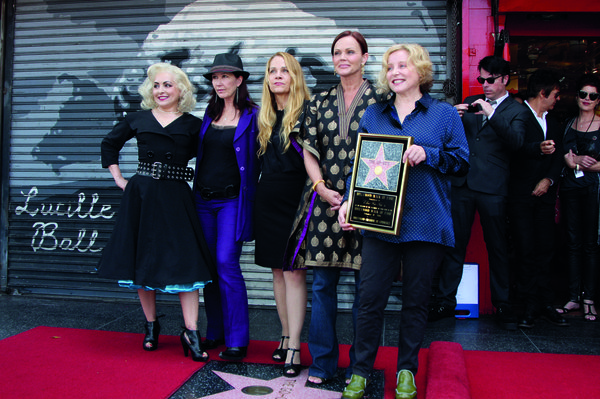 The band in August 2011 on the Hollywood Walk of Fame
The band in August 2011 on the Hollywood Walk of Fame
Escape From LA
By the time they were household names, The Go Go's' music had a radio-friendly fizz that was honed for mainstream appeal, but as they will insist to anyone who needs reminding, they were a punk band in origin and attitude even if the sound veered unashamedly towards a day-glo pop aesthetic.
'I've actually gotten in arguments with trolls online about it', guitarist Jane Wiedlin told NPR. 'Being a part of the Hollywood punk scene is one of the most important things to ever happen to me. I'm not happy when people dismiss it.'
Lead singer Belinda Carlisle backed up that account of the band's origins: 'Jane and I lived in a punk rock apartment building in Hollywood called the Canterbury. It was like the Chelsea hotel in New York, that kind of thing. I loved all the different clubs in LA: you'd go to the Whisky, drive down to the Starwood, see a band there, go downtown to Chinatown to Madame Wong's, see someone there, go to an afterparty in Hollywood... it was a really lively, creative time in Los Angeles.'
However, they still weren't afraid to embrace the more glamorous side of life. 'I don't ever remember Belinda going to a concert without her stiletto heels', fellow Los Angeles punk musician Alice Bag told NPR. 'She was pogoing, and if anybody got too rowdy, she'd probably pogo on their foot with her stiletto'.
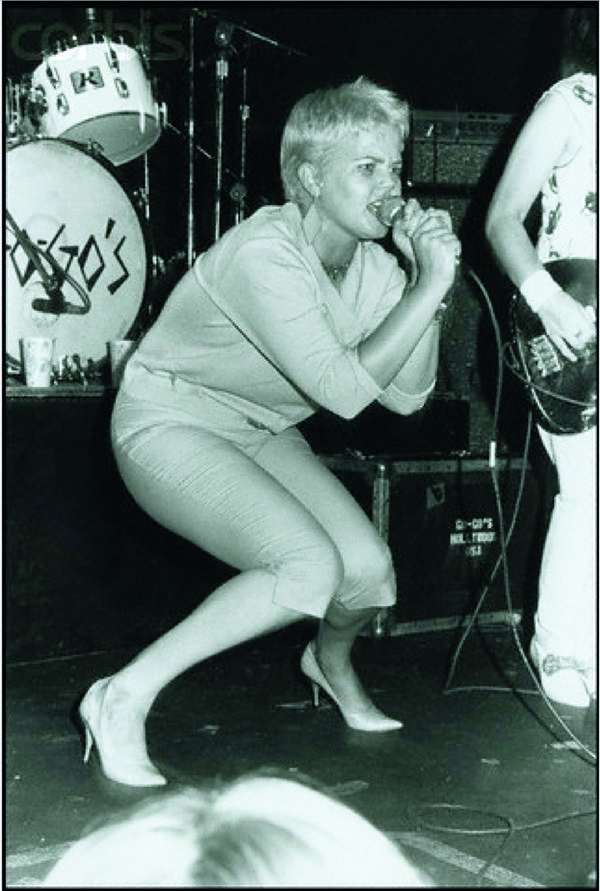 Carlisle with the group in July 1980 at Starwood 8 in Los Angeles
Carlisle with the group in July 1980 at Starwood 8 in Los Angeles
Hollywood Energy
A strong set of songs were taking shape, many of which reflected the scene The Go Go's were an integral part of. Artist and poet Pleasant Gehman, a friend and fan of the band back then, singled out 'This Town' in an interview with NPR. '[It's] a defining LA rock and roll moment. I equate it with "LA Woman" by The Doors. It's got that definitive Hollywood energy to it... In the punk scene, half the buildings we lived in were these grand old Hollywood buildings [that became] slums, but we could all feel that special energy of Hollywood.'
 Belinda Carlisle and Jane Wiedlin in the music video for ‘Turn To You’ from 1984
Belinda Carlisle and Jane Wiedlin in the music video for ‘Turn To You’ from 1984
Beat Surrender
Despite having roots in noisy, untutored avant-rock, they were a pop group in essence, and their songs were naturally gravitating in that direction. Guitarist Charlotte Caffey remembers presenting the band with one of their best-loved songs. 'With "We Got The Beat" I thought, man, these girls are going to throw me out... because it was a pop song! Fortunately they just loved it, and I believe that changed our trajectory.' Added Wiedlein: 'I felt like we had arrived. It was definitely another step up that ladder'.
For a while, few in the record industry recognised the band's potential, dismissing them as a punky cult concern and an uncommercial prospect due to their gender. 'The Go-Go's played [a blend of pop and punk] from the beginning', said John Doe of band The X. 'But that's what mystified all of us. That's what made us think, "What do you have to do to get noticed or to be picked up by a major or even an independent label?!". Because here's five women who are playing really accessible and good, solid pop songs, and nobody wants to sign them.'
Something Special
Nonetheless, the prominent creative forces in The Go Go's had drive and ambition, and weren't prepared to settle for knocking around the local punk scene for long, even if they risked being labelled sell-outs by their peers for chasing success. That meant commitment and capability both mattered.
Early drummer Elissa Bello was dispensed with to make way for Gina Schock, who the band regarded as a more competent player. As was original bassist Margot Olavarria, who fought against the drift towards more accessible material and then fell ill at the end of 1980, rendering her unable to play shows. Kathy Valentine, her stand-in, was soon invited to become permanent. 'They were hard decisions but they were the right decisions', Charlotte Caffey reasoned in a YouTube interview posted in 2020.
By this time, the quintet had honed their live show on UK tours with The Specials and Madness in 1980 and released the 'We Got The Beat' single on the latter's label Stiff in the UK. Soon afterwards, Jane Wiedlin presented a song written about the relationship she had with The Specials' Terry Hall on that trip.
'Jane wrote it by herself', Valentine explained later, 'but gave co-credit [to Hall] because of the inspiration: a love letter [he] wrote her'. Hall later returned the compliment by covering the song - 'Our Lips Are Sealed' - with his new wave band Fun Boy Three, achieving a bigger UK hit than The Go-Go's themselves managed.
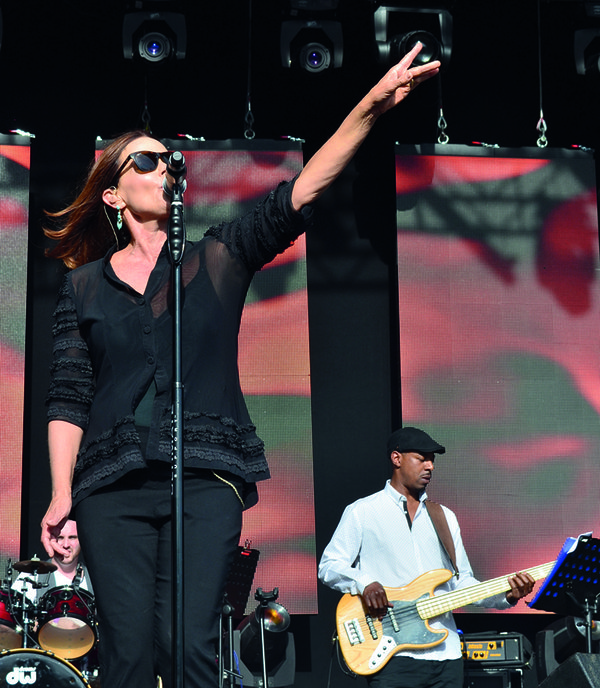 Carlisle on stage in 2014
Carlisle on stage in 2014
A Different Beat
That was in the future, though. For now, the British tour and the Stiff single didn't help them get signed back home in the States. 'I had a folder of rejection letters from record labels in Los Angeles, said manager Ginger Canzoneri. "Thanks, but you know, all-girl bands just don't sell records".'
Their luck changed when Miles Copeland, manager of The Police, was given the chance to set up his own label, IRS, as a subsidiary of his band's label A&M. After seeing The Go-Go's perform at their local Hollywood haunt, The Whisky A Go-Go, he snapped them up and set about arranging for studio time to make their debut album.
Beauty And The Beat's sound began to take shape in earnest when the band chose producer Richard Gottehrer to take the reins in the studio in New York City. The co-writer of '60s classics such as The Angels' 'My Boyfriend's Back' and The Strangeloves 'I Want Candy' was seen as a punk-simpatico producer, having worked with Robert Gordon, Link Wray and Dr Feelgood, as well as more recently with Blondie.
Gottehrer had ideas that would initially prove to be controversial, however. 'He really wanted people to hear the lyrics', Charlotte Caffey told NPR, 'because Jane... she's a really fantastic lyricist, and he really wanted to highlight that. He [said to] us: "Let's try playing it a little bit slower"'. The group went along with this approach, but the result wasn't quite what they had envisaged.
 The group in a 1981 publicity photo for the album Beauty And The Beat
The group in a 1981 publicity photo for the album Beauty And The Beat
The Go-Go'S Are Go
The album was released on the 14th of July, 1981, at the same time lead single 'Our Lips Are Sealed' was climbing the Billboard charts. Helping the latter was a promo video the band had made that showed them larking around driving the streets of their hometown, which would be screened regularly on MTV when the channel launched in August of the same year. The follow-up, a re-recorded version of 'We Got The Beat', reached No 2 in January 1982, and the album began its long reign over the Billboard charts two months later. The Go-Go's had officially arrived.
Kathy Valentine later told The Austin Chronicle: 'The Go-Go's couldn't claim to sound like punk rock anymore, but we were a true indie band making records and videos void of excess and theatrics'.
More significantly, she said, they were 'the first all-girl band that countless kids, teens, and young adults had ever seen. There had been others before us, but we were the band MTV put in people's living rooms. We were five women having a good time like a bunch of girlfriends might, except we played guitars and drums and wrote catchy songs. It was revolutionary'.
